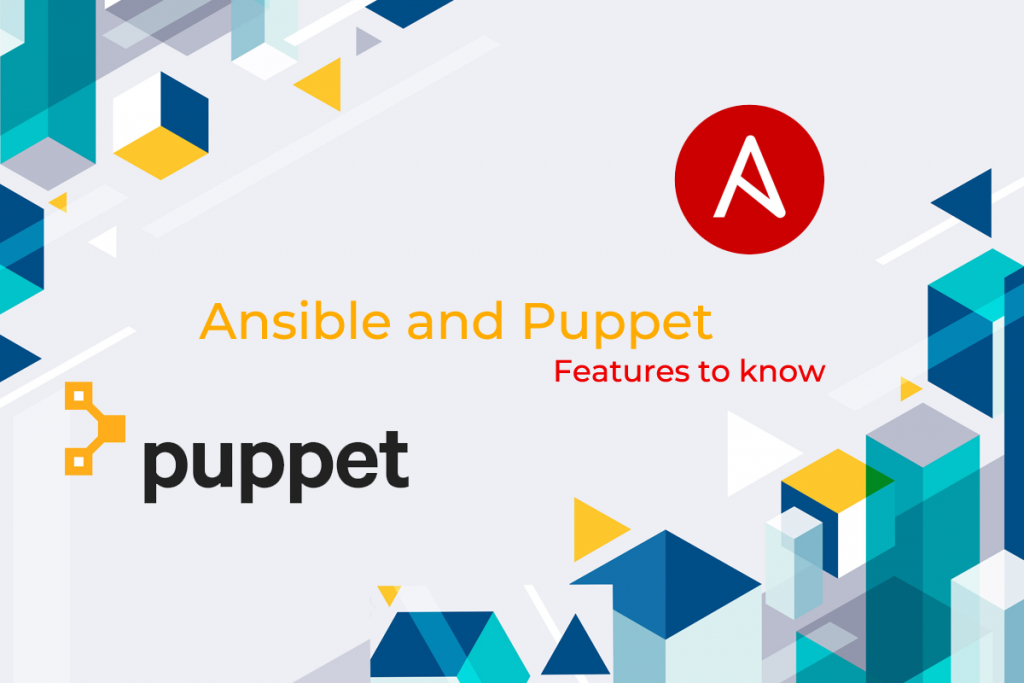
To deal with profoundly complex assignments, many Configuration Management tools has been introduced and the two most well known ones incorporate Ansible and Puppet. As per specialists, setup board is an essential procedure and is viewed as basic in the DevOps model to help ceaseless integration.
Short History of Puppet and Ansible :
Puppet:
The Puppet introduced in 2005. It is considered as the greatest player in the CM business with an amazing piece of the overall industry, it is written in Ruby programming language. Ruby is an open-source programming language that keeps running on all major working frameworks like Linux, Windows, Mac OS and so forth.The enormous IT Companies are running their information servers utilizing puppet. There is one Enterprise version too accessible through PuppetLabs. In spite of the advantages, clients' grumble that Puppet is slow to adopt requested changes, such as adding new features and fixing bugs.
Ansible:
Ansible is introduced in 2012 by AnsibleWorks. It is possessed by the Red Hat now and witnesses a lot little piece of the pie than Puppet. It is characteristic on the grounds that Ansible is later while Puppet has been around much more. Puppet is an open source rendition and it has a venture release as well, Ansible Tower. Ansible written in Python programming language and intended to be lightweight with quick sending highlights.Python built into most Unix and Linux systems, so setting up Ansible and running can be done fairly quickly. Being agentless is one of the features most touted in discussions about Ansible’s simplicity. This agentless nature adds to the ease of setup and use. Also, the CLI accepts commands in almost any language, which is a big benefit. It incorporates many modules to help a more extensive number of reconciliations, as AWS and that's just the beginning.
Contrasts in course of action and utilization of Puppet and ansible:
Puppet is anything but difficult to introduce and utilize. Puppet is model-driven, built with systems administrators in mind. It depends on the customer server engineering and you may introduce Puppet on different servers together.Ansible has an ace and no operators running on the customer machines, most capacities performe over SSH convention. It is very straightforward, agentless and utilizes YAML punctuation. The mind boggling errands are overseen in arrangement documents named as playbooks and directions can be written in practically any programming language. Ansible is written in Python which is incorporated with most Linux and Unix arrangements, making arrangement simpler and quicker.
Modules :
Puppet's repository is Puppet Forge while Ansible's archive is Ansible Galaxy. Forge is huge (almost 6,000 modules), and the modules can be marked as approved/supported by Puppet, so you won’t have to waste your time on ones that haven’t been proven to work. Galaxy doesn’t have this feature, so you may have to spend some time and effort changing things manually.Scalability :
Ansible and Puppet both are exceptionally versatile, this implies they could deal with a huge increment in hubs with no issue. Be that as it may, versatility is viewed as progressively advantageous in Ansible.Support :
Puppet has been around from quite a long time than Ansible and clearly there is more help and greater designer network for the Puppet. You will see dedicated support portal with a knowledge base, and two levels of professional support offered: Standard (included) and Premium. To end up engaged with the Puppet people group, you can get to occasions or take an interest in different channelsAvailability :
Both Ansible and Puppet have backups in case of failure. Ansible has a secondary node in case the active node fails, and Puppet has more than one master in case the original master fails.Graphical User Interface :
Puppet's Graphical User Interface is more interactive than Ansible . You can use it for viewing, managing and monitoring. For more complex tasks, you’ll probably use the command-line interface CLI, which is based on Ruby.At the hour of its initiation, Ansible will be in order line device as it was before and now you will get a UI if you use the enterprise version, but it’s by no means perfect . Some of the time, GUI isn't in flawless adjust with the Command line and not ready to play out very similar things like the direction lininterface.
Which will be good for use :
Both the tools are brilliant in their own specific manners for various reasons. The correct decision truly descends to your business needs. If you have small and simple organizations Ansible is useful, whereas if you have more complex or longer arrangements Puppet is useful .In the event, if you have a fixed set of machines to maintain, then Puppet is certainly the best choice. But if your machine count is reprovisioned , Ansible will be the right way to go. The major differences between Ansible and Puppet mean that the right choice really comes down to your organization’s specific needs
Hope you liked it and stay tuned for more updates for the upcoming blogs
Join us on Twitter , Facebook


